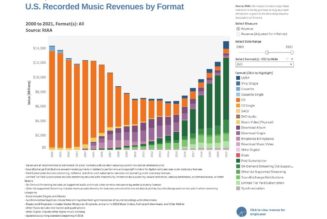/cdn.vox-cdn.com/uploads/chorus_asset/file/24127029/1241735434.jpg)
Tech companies picked an interesting time to start including women’s and reproductive health in their products. For years, they sidestepped the issue: Apple didn’t include period tracking in its health app until 2015. Fitbit only added “Female health tracking” in 2018. For products that claim to help people understand their bodies, most spent years sidestepping the basic biology that affects half the population.
But over the past year or so, companies have started juicing up their menstrual tracking and fertility features, and there’s been more investment in so-called femtech. And they caught up just in time for the end of federal abortion protections in the United States, a right-wing pushback on birth control, and a culture war maelstrom around fertility and reproductive health.
Most of the new additions to tech products center around period prediction, fertility prediction, and cycle monitoring. Apple expanded its fertility tracking features in the Watch Series 8; new temperature monitoring sensors let the watch predict when someone may have ovulated. Oura added period prediction to its smart ring last fall. Neither are formal medical devices, so the companies can’t market them as forms of birth control. But they’re tracking more closely toward fertility awareness birth control apps like Natural Cycles and Clue, which have Food and Drug Administration clearance. Oura has a relationship with Natural Cycles — the app accepts temperature data from the smart ring.
People have been asking for these types of features for years, so these companies are following consumer demand. They’re popping up to try and capitalize on a vacuum: most people don’t have a good understanding of fertility and the menstrual cycle, and there hasn’t been much investment in new forms of contraception over the past few decades. Fertility tracking historically hasn’t been seriously studied as a family planning tool, either to help people conceive or to prevent pregnancy — even though monitoring things like cycle tracking, body temperature, and cervical mucus texture can (in some cases if done using best practices) help figure out when people are most at risk of getting pregnant.
Over the past few years, there’s been a flood of popular cycle tracking apps hitting the market, and big companies are now getting on board. There’s more interest in non-hormonal ways to prevent pregnancy, too, in part because of the rates of side effects. Experts say it’s good to see big tech companies getting involved in that space — if they do it well, it can lend legitimacy to those approaches. Other groups are also jumping into that vacuum: female athletes, for example, are working with training staff to see how performance evolves with their menstrual cycle. Pro soccer players in the United States and England say that work is one reason they’ve been successful.
But the right-wing, anti-abortion ecosystem is exploiting this vacuum, too. A recent Mother Jones investigation highlighted the ways anti-abortion groups are sowing doubt in hormonal birth control and directing people toward fertility awareness. Fertility awareness methods and programs often have a strong religious, anti-abortion, anti-contraception undercurrent. Advocates in that space often push fertility awareness to everyone as an alternative to other types of birth control, even people for which it’s not well-suited. One fertility tracking app, Femm, is funded by a Catholic anti-abortion activist, a 2018 Guardian report found. The Mother Jones piece showed that the co-founder of the group FACTS (Fertility Appreciation Collaborative to Teach the Science) is a member of anti-abortion groups and that the group promotes misinformation about hormonal birth control.
That muddiness makes doing research in this space difficult, says Rebecca Simmons, a researcher and fertility awareness specialist at the University of Utah. Studying fertility and trying to understand how people can manage their menstrual cycles — a pursuit that aims to give people more agency around their bodies — means wading into a politically charged area full of groups with an aggressive agenda that takes away agency. “It’s a tricky row to hoe,” Simmons says.
That’s the landscape technology companies adding fertility features are walking into. There’s a scientific gap around reproductive health, and willingly or not, they’re entering the fight over that gap. Most companies seem to be aware of the landscape around abortions: after the Supreme Court overturned Roe v. Wade, Apple said it supported its employees’ right to make their own decisions about their reproductive health. Clue released a statement saying that the “decision to end a pregnancy should be made in the context of legal, regulated healthcare.” Companies are prepared for pressure around privacy policies.
It’s trickier to handle an environment where promoting a health approach risks being hijacked by the right wing’s attempts to reduce access to birth control. Companies have an interest in marketing their products as the best solution to a problem. Anti-abortion groups want to push fertility tracking as the best way to manage reproductive health. But fertility awareness methods, particularly when used to prevent pregnancy, aren’t the best option for everyone. Companies making cycle tracking products should take care to make that clear.
Experts like Simmons want people to have more options and more choices around birth control and fertility management. Tech only helps, though, if the companies develop their products using rigorous science that contributes to our understanding of fertility. So far, that’s a mixed bag: companies like Clue and Natural Cycles have published data on their approaches and, because they’ve gone through the FDA authorization process, have some element of transparency about their function. Apple, on the other hand, hasn’t made its data available and, experts say, hasn’t put as much rigor into its products.
Big tech companies have muscle, huge market shares, and reputations for taking complex tasks and making them easier. That could be a boon for the reproductive health landscape if they’re able to drive more attention and focus to an area that’s been under-resourced. But if they’re not communicating carefully around the products they create, they risk giving more ammunition to groups that want to take choice away.









